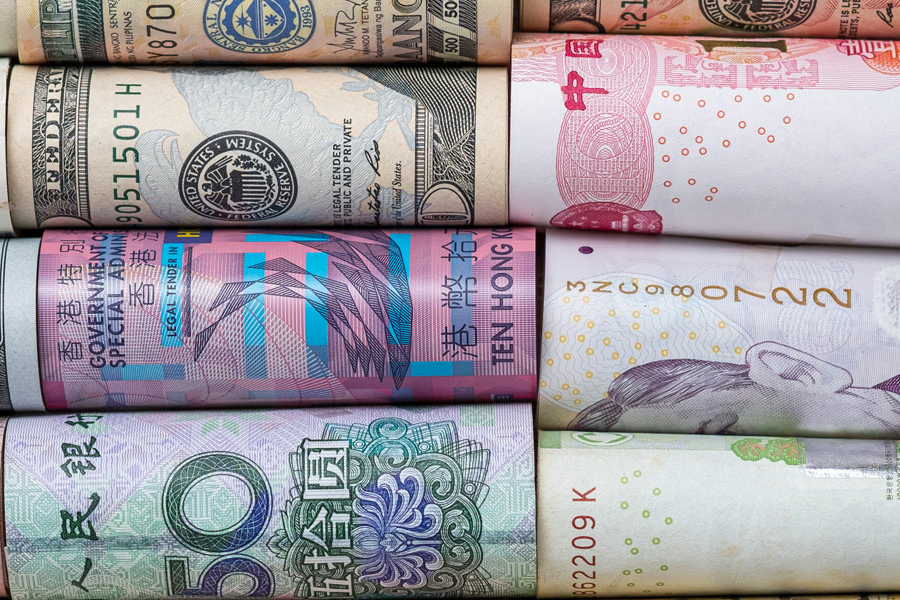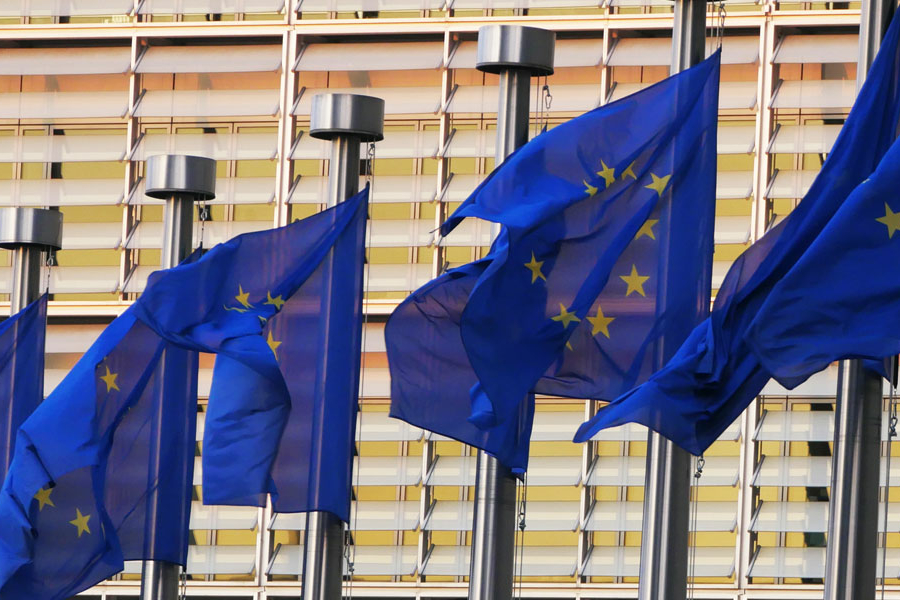Foreign direct investment reviews increasingly impact cross-border deals
Continued emphasis on FDI around the world, particularly in the US and Europe, creates additional challenges for investors

The past two years have witnessed significant geopolitical fracturing and macroeconomic difficulties that continue to hamper certain dealmaking. Several sectors have posted transactional lows throughout 2023, and persistent inflation and high interest rates look set to remain in place for now. Economic decoupling and growing global regulations also create transactional hurdles, while China's slowing economy and now the Israel-Hamas war add to a steady sense of market unpredictability.
And yet, with volatility comes opportunity, such as infrastructure and renewables projects, growth in the semiconductor industry, and the rise of private credit. As many companies and investors in Taiwan are discovering, economic or regulatory setbacks are an invitation to think innovatively and to recalibrate their approach. With the right information and careful planning, they can position themselves for success now and in the future.
Following our 18th Annual Taiwan Roundtable Series in September, we hope this year's report for Taiwan-focused companies and investors provides helpful guidance in a rapidly evolving political and economic landscape.
We begin with a look at the continued proliferation of foreign direct investment (FDI) regimes in the US and the European Union. The Committee on Foreign Investment in the United States (CFIUS) has ramped up its activity to an all-time high, while EU member states continue to implement, refine and expand their regimes. Many FDI focus areas overlap with those of Taiwanese companies—technology in particular—meaning early-stage analysis is critical in this arena.
We then analyze the impact of forum selection in contracts with mainland Chinese (PRC) companies. Despite the tensions between PRC and Taiwan, their economies remain inextricably intertwined, so Taiwanese companies should consider how the provision of "interim measures" in Hong Kong arbitration can benefit their business.
Next, we provide an overview of the EU's new Foreign Subsidies Regulation (FSR), which scrutinizes foreign financial contributions received by companies engaging in M&A and public tenders in the EU, and grants the European Commission the power to investigate any other potentially distortive market situation. Taiwanese companies should be aware that the FSR casts a wide net and could also encumber merger control and FDI filings.
We then turn to the growing popularity of the US International Trade Commission (ITC) for trade secrets litigation. The ITC's unique global reach means trade secret owners can make a claim of misappropriation on any product that enters the US, even if the trade secret and alleged misappropriation are entirely extraterritorial. The risk of these claims has broad implications, especially for foreign companies trying to diversify and broaden their global footprint.
Our transaction-focused piece looks at the evolution of M&A, debt finance and investment funds practices in a tough macroeconomic environment. Certain technology and renewables remain attractive for M&A and private equity, while local consumer brands are considered the next target of credit investors, and the funds space is seeing growth in the secondaries market and NAV financings.
Aligning with the Roundtable Series' "clubs and fences" theme, we consider trade and sanctions through this framework. Taiwanese companies have the difficult task of balancing often-competing interests in Asia-Pacific and the West, but they will benefit from taking advantage of regional trade clubs and nimbly navigating regulatory fences that include tariffs, sanctions and export control.
Lastly, we examine two major proposed changes to US antitrust policy by the US Federal Trade Commission (FTC) and the Department of Justice, Antitrust Division: the FTC's proposed ban on non-compete clauses and both agencies' radical proposed changes to the Hart-Scott-Rodino Form. One key takeaway examines the possible use of employee NDAs to protect company information.
We look forward to discussing these and other issues with you.
Continued emphasis on FDI around the world, particularly in the US and Europe, creates additional challenges for investors

Provision of "interim measures" strengthens Hong Kong's position as a level playing field in arbitration against PRC counterparties

The bloc's new scrutiny of foreign financial contributions poses regulatory hurdles for Taiwanese investments in M&A and public tenders in the EU

The growing popularity of the ITC as a regulatory venue with global reach has implications for Taiwanese trade secret owners and investigation targets

M&A, debt finance and investment fund actors seek alternative routes to dealmaking in the face of a dim macroeconomic outlook

The evolving trade and sanctions landscape reflects a new global regulatory paradigm

US antitrust agencies step up enforcement with proposed policy changes that create uncertainty and new regulatory burdens


M&A, debt finance and investment fund actors seek alternative routes to dealmaking in the face of a dim macroeconomic outlook
Benjamin Y. Li of Lee and Li co-authored this publication
Geopolitical tensions, tightening cross-border regulations, and rising inflation and interest rates have slowed the pace of traditional M&A and private equity dealmaking globally over the past 12 months. Mega-leveraged buyouts and hot auctions have been few and far between, with China's economic slowdown in particular having a great impact on the Asia-Pacific region, including in the form of stalled and failed processes, terminated transactions and drawn-out bilateral deals.
The silver lining for dealmakers and advisers, though, is that sponsors with pent-up cash are urgently looking to other regions to deploy it. The present economy has pushed more companies into distress, providing greater opportunities for hard-pressed sellers and buyers to agree on valuations.
Taiwan has not been immune to these trends. Since 2020, private equity has returned to the country's M&A market, mainly targeting technology, media and telecommunications, healthcare, medical devices and other related industries. Some headline deals include Baring Private Equity Asia's take-private of contact lens manufacturer Ginko and BlackRock's acquisition of solar power developer New Green Power, both in 2022; and Japanese PE firm Advantage Partners' investment this year in Maedan, a manufacturer of electrical wires and conductors. Spurred on by friendly government policy, an increasingly fraught US-China relationship, and more attractive and emerging technology targets in Taiwan, the trend should continue beyond 2023.
Inbound M&A rose sharply in 2022 but decreased by nearly a quarter in the first half of 2023, according to Taiwan's Ministry of Economic Affairs. Growth was mainly driven by the easing of the pandemic, with outbound investment also enjoying a 21 percent year-on-year increase. Global recession concerns and financing constraints in 2023, however, saw that figure drop by 45 percent in the first half of the year.
Despite these macroeconomic challenges, growth in the renewable energy industry has proved exceptionally resilient and is expected to continue beyond 2023. Taiwan is also poised to see its share of technology transactions, given the increasing importance of semiconductors in the tech landscape, particularly in artificial intelligence. Indeed, players across the industry, both vertically and horizontally, are likely considering diversification, de-risking and expansion into other regions.
Public-to-privates also present a unique opportunity in this market, where valuation negotiations may be less open to interpretation. Relatively mature Taiwanese companies that have struggled to find success with local capital markets may combine a variation on the take-private route with the unique legal technology of the de-SPAC process in order to access capital markets in the US.
Uncertainty and hesitation persist in the regional market, but there is cause to be cautiously optimistic that the next 12 months will continue to see an uptick in dealmaking.
The COVID-19 pandemic upended the global economy, while subsequent geopolitical tensions, trade wars and regulatory changes have further disrupted global supply chains, discouraged cross-border investments and increased market volatility.
In response, sponsors and credit providers are now revisiting which asset classes make the most sense in the current economy. From their perspective, the top priority is steady cashflow to service debt, meaning they will avoid businesses that depend heavily on import/export or other cross-border activities that increase uncertainty and volatility. Sponsors and creditors are accordingly shifting their interests to businesses that would benefit from a mass domestic market and are striving to identify the next consumer trends that will generate steady cashflow.
With the economy still in recovery mode, consumers are favoring more affordable options and spending on “quality of life” activities, such as dining, travel and in-person experiences. They also care less about popular global brands and more about a product's benefits and features, which allows high-quality local brands to gain a greater share of certain mass domestic markets. These businesses—a formerly overlooked asset class—are expected to gradually become the priority for credit investment.
When COVID-19 restrictions were lifted and economies reopened, global demand rebounded rather quickly, but supply chains have remained unrestored. The unleashing of pent-up demand led to a steep increase in product and service prices. At the same time, Russia's invasion of Ukraine disrupted worldwide supply of key commodities such as oil and gas, causing commodity prices to spike and, consequently, inflationary pressures to intensify.
To battle inflation, in March 2022 the US Federal Reserve announced its raise of the federal funds rate, for the first time since 2018. Since then, the Fed has raised the rate multiple times, up to 5.5 percent as of October 31. These high interest rates have made it more difficult for companies to raise debt, while an unstable equity market has deterred investors. As a result, equity-linked financing appears to be coming back into favor.
Equity-linked financing is a hybrid of debt and equity investments, combining a traditional commercial loan or corporate bond with the option of converting the debt instrument into equity. Because of the equity feature, borrowers or issuers typically pay a lower interest rate than on their conventional debt instruments. Investors, meanwhile, enjoy the various benefits of owning equity, but are protected from the risks of a pure equity investment, thanks to the fixed-income nature of loans or bonds. This embedded protection is even more attractive in the current macro environment.
Ultimately, equity-linked debt products—which include loans with share warrants, preference shares and convertible loans or bonds—benefit both borrowers and investors, as they allow easier access to capital and offer an alternative investment option.
A US$1 billion convertible bond from Chinese EV maker NIO, issued in September, signals growing appetite among Asia-Pacific companies for equity-linked instruments. In Q3 2023, the region's borrowers raised US$12.8 billion using hybrid notes, the highest quarterly figure since Q1 2022. The issuance boom is a testament to the popularity of equity-linked financing in an environment of high interest rates and market unpredictability.
Convertibles are proving attractive even to companies that would otherwise have no problem obtaining traditional debt financing. With interest rates set to remain high for now, equity-linked financing products should prove a popular option with investors for the foreseeable future.
Fundraising by Asia-Pacific–based sponsors has continued to be slow, largely driven by geopolitical tensions and unfavorable market conditions. While sponsors once had to complete fundraising within 12 months, now 18- or 24-month fundraising periods are common, and general partners (GPs) are introducing options to extend the initial fundraising even further, by another six to 12 months. Uncertainty over the Chinese economy and market has also driven existing Asia-Pacific funds to seek to expand the geographical scope of where they can invest. This should lead to more regional, and fewer country-specific, funds being raised.
The present disadvantages facing funds have conferred stronger leverage and bargaining power to large institutional investors, who are now demanding more bespoke arrangements. These range from no-fee, no-carry co-investments—historically sought after by investors—to fund-of-ones that invest in, or alongside, multiple strategies and products offered by a sponsor, on economic terms more favorable to the investors. They may also require sidecar arrangements that focus on a subset of sectors or countries.
The secondaries market also looks set to continue growing in Asia-Pacific. Due to the gap in valuations, the challenging fundraising environment and difficult exit conditions, sponsors will keep looking for alternative liquidity solutions. On the GP-led side, numerous sponsors are considering continuation funds that will allow them to transfer specific assets, from a fund nearing the end of its life, to a new vehicle that will give sponsors another three to five years to manage them. The transfer often includes crystalized carried interest.
Financial advisers in the region are also beginning to introduce net-asset-value, or NAV, financings as a liquidity solution to boost distributions to paid-in capital (DPIs) or to fund follow-on investments, although limited partners' (LPs) reactions to these GP-led liquidity solutions have been mixed. As regulatory regimes tighten in certain Asia-Pacific jurisdictions, including Taiwan, and LPs themselves look to find additional liquidity, LP-led secondary transactions—involving the purchase and sale of LP interests in funds—should continue to grow and dominate the Asia-Pacific secondaries market.
Finally, the US Securities and Exchange Commission (SEC) recently published sweeping changes to the way private investment advisers are regulated in the US. One of these new rules will require sponsors to disclose—to all investors—any preferential treatments offered to specific investors, and will bar certain other preferential treatments involving liquidity and information rights outright.
While the rules are currently being litigated and industry practitioners are exploring how they will be interpreted, the rules will very likely disrupt GP-LP dynamics and the fundraising process. The new rules are particularly relevant to investment advisers registered with the SEC, but will also affect those that are based outside of and unregistered with the US, but still managing money from US investors. Given the size of the US market and the dominance of US-based managers globally, developments in the US will have a ripple effect on the rest of the world.
White & Case means the international legal practice comprising White & Case LLP, a New York State registered limited liability partnership, White & Case LLP, a limited liability partnership incorporated under English law and all other affiliated partnerships, companies and entities.
This article is prepared for the general information of interested persons. It is not, and does not attempt to be, comprehensive in nature. Due to the general nature of its content, it should not be regarded as legal advice.
© 2023 White & Case LLP